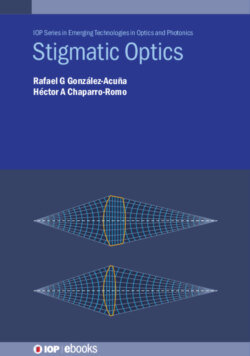Читать книгу Stigmatic Optics - Rafael G González-Acuña - Страница 17
На сайте Литреса книга снята с продажи.
1.6 Faraday’s law
ОглавлениеFaraday’s electromagnetic induction law establishes that the electromotive force induced in a closed circuit is directly proportional to the speed with which the magnetic flux passing through any surface with the circuit as edge changes in time. Thus,
∮cE⃗·dl⃗=−ddt∫SB⃗·n⃗da,(1.13)
where E⃗ is the electric field, dl⃗ is the infinitesimal element of the length of the circuit represented by contour C, B⃗ is the magnetic field and S is an arbitrary surface, whose edge is C. The right-hand rule gives the directions of contour C and n⃗da.
The electromotive force or induced voltage (represented by emf) is any cause capable of maintaining a potential difference between two points in an open circuit or of producing an electric current in a closed circuit.
According to the Stokes theorem, the differential form of Faraday’s law is generally written as,
∇×E⃗=−∂B⃗∂t,(1.14)
where ∇×E⃗ is the curl of the electric field E⃗. The curl operates on a vector field and provides a vector result that designates the tendency of the field to circulate around a point and the direction of the axis of greatest circulation.
What tells us the differential form of Faraday’s law is that a circulating electric field is produced by a magnetic field that changes with time.
